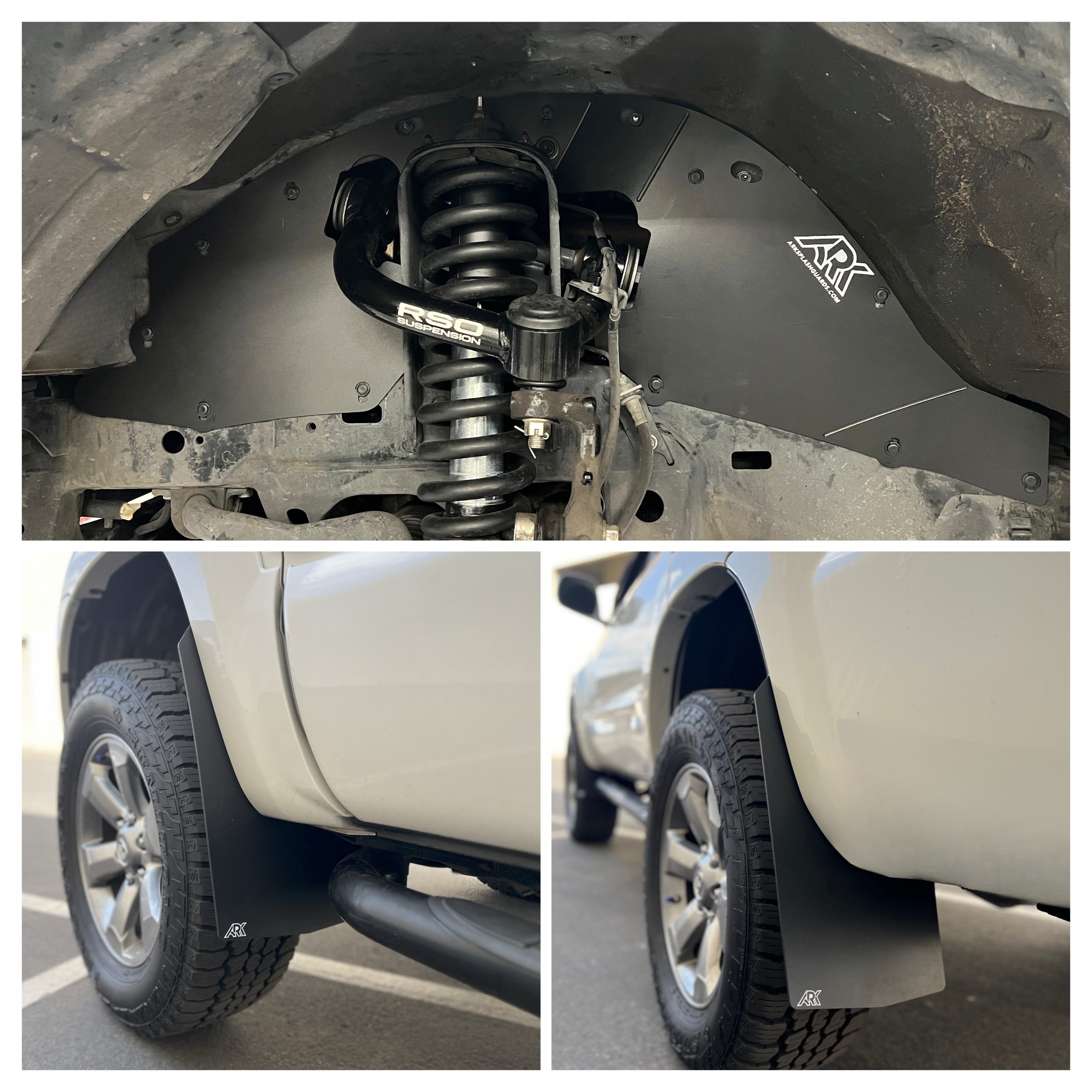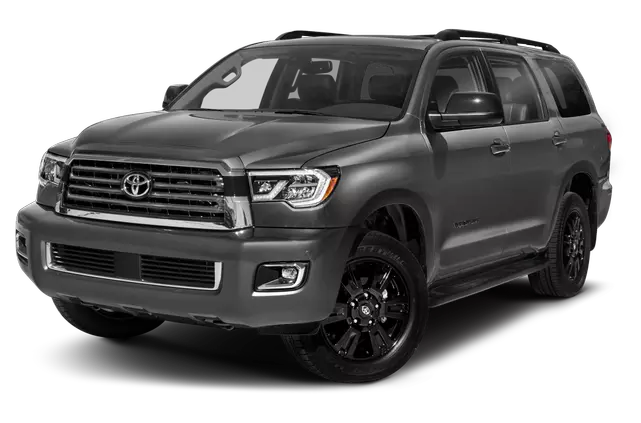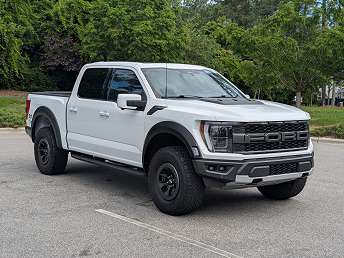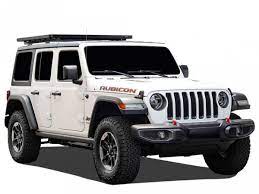What’s Inside Your Wheel Wells? The Unsung Importance of Inner Liners

If you’re like most drivers, especially those who explore rugged trails or commute on gravel-strewn roads, the space above your tires isn’t something you inspect often. But tucked out of sight is a hardworking component that quietly protects your vehicle from damage: the inner wheel well liner. This simple barrier shields your suspension, brakes, wiring, and painted body panels from the constant barrage of grit, rocks, water, and corrosive road chemicals.
What Exactly Is a Wheel Well Liner?
A wheel well liner (also called a fender liner or inner splash shield) is a formed panel that lines the inside of your wheel arch. Depending on your vehicle, liners may be made of molded thermoplastic, fiber-reinforced composite, metal, or a felt-like acoustic material. Some trucks and SUVs have liners only in the front; others have them front and rear. Many modern vehicles include OE liners from the factory, but coverage and durability vary dramatically. That’s where premium aftermarket options come in, especially for owners who lift their vehicles, upsize tires, or spend real time off-pavement.
Why Inner Liners Matter More Than You Think
Liners are easy to overlook because they’re out of sight and rarely discussed at the dealership. Yet they perform several critical jobs every time the wheels turn:
1) Debris defense. Tires fling gravel, sand, and road tar with surprising force. A liner absorbs those impacts before they chip paint, dent thin sheet metal, or slice through wiring and hoses. On washboard roads or rocky trails, that protection can be the difference between a carefree day and a trail-side repair.
2) Corrosion and contamination control. Mud, clay, monsoon runoff, and road salts can pack into seams and water-trap pockets inside wheel wells. Over time, trapped moisture accelerates rust. Liners act like a shield and promote cleaner washouts, so contaminants don’t sit against bare metal.
3) Thermal management. Brakes and engines generate heat; exhaust routing and turbo components can run very hot. Quality liners help manage radiant heat away from paint and plastics while resisting deformation themselves.
4) Noise, vibration, and harshness (NVH). Many liners incorporate acoustic properties that dampen tire roar and pebble ping—especially important with aggressive all-terrain or mud-terrain tread patterns.
5) Protection for critical systems. Modern wheel wells are crowded. You’ll find washer fluid reservoirs, sensors for driver-assistance systems, headlight harnesses, and brake/ABS lines running right behind that spinning tire. A stout liner is a cheap insurance policy for those essential components.
The Southwest Factor: Why Arizona Drivers Need Robust Liners
Desert driving is beautiful…and brutal. Here in Arizona, wind pushes talcum-fine dust into every gap. Trails can turn from hardpack to bowling-ball rock gardens in a heartbeat. Seasonal monsoon storms transform dry washes into mud baths, and spiky vegetation adds an extra layer of hazard. All of that translates directly into more abrasion, more impact events, and more opportunities for slurry to lodge in hidden cavities.
A strong inner liner becomes mission-critical in this environment. It reduces the sandblasting of inner fenders, keeps slurry from packing behind pinch seams, and helps your post-ride rinse actually remove debris instead of just pushing it deeper.
Materials and Construction: Not All Liners Are Created Equal
Molded thermoplastic (TPO/HDPE). Lightweight and impact-resistant. Good for daily drivers and moderate trails. Look for UV-stabilized material and adequate thickness so it won’t oil-can or warp in heat.
Fiber-reinforced composites. Stiffer and more heat stable, often with excellent form retention. Useful near hot components and in high-impact zones.
Coated metals (aluminum/steel). Very robust and repairable with basic tools, but require quality coatings and drainage design to avoid corrosion and resonance.
Acoustic felt liners. Great for noise reduction, commonly used by OEMs in the front wheel wells of passenger vehicles. Less ideal for dedicated off-road rigs due to mud retention if there isn’t good drainage.
Beyond raw materials, pay attention to coverage (how far the liner extends toward the frame and bumper), mounting (factory points vs. drilling, clip quality, and fastener material), and service access (openings or removable panels for fog lights, shocks, or reservoirs).
Fitment Considerations for Lifted or Modified Vehicles
Bigger tires and suspension travel amplify everything happening inside your wheel wells. Here’s what to check if you’ve modified your setup:
-
Clearance at full stuff and lock. Cycle the suspension or articulate the axle to ensure the tire won’t contact the liner at full compression or steering lock.
-
Tire throw path. Aggressive tread lugs sling larger debris. Reinforced zones near the rear of the front wheel wells (the classic “sandblast area”) can prevent premature wear.
-
Compatibility with aftermarket bumpers, sliders, and flares. A purpose-built liner should meet these accessories cleanly without leaving gaps that funnel debris.
-
Heat adjacency. Turbo downpipes, catalytic converters, and diesel DPFs can get very hot; ensure the liner design and material can handle the location.
Signs Your Liners Need Attention
You don’t need a lift to inspect your wheel wells. A flashlight and a simple routine can save headaches:
-
Cracks or tears in the liner, especially around fasteners.
-
Missing clips or loose edges that allow the liner to flap and wear through.
-
Packed mud/sand behind the liner or trapped in seams, indicating poor drainage or coverage gaps.
-
Rubbing marks from tire contact after a lift or tire change.
-
Unusual noises (rattles or pinging) after road work or trail runs.
If you spot any of these, address them promptly—small issues compound quickly in harsh conditions.
Maintenance: Keep Your Wheel Wells Clean and Happy
A little proactive care goes a long way:
-
Rinse after off-road trips. Aim the hose or low-pressure washer behind the liner edges and along seams. Avoid blasting high-pressure water directly into electrical connectors.
-
Remove trapped debris. If your liner allows, pop a few clips and gently flex it back to clear packed mud or gravel.
-
Inspect fasteners. Replace lost plastic clips; upgrade to stainless hardware where appropriate to prevent corrosion in high-spray zones.
-
Check after tire rotations or alignments. Shops may remove or flex liners during service—verify they’re resecured correctly.
Common Myths About Wheel Well Liners
“I live in a dry climate, so I don’t need them.”
Arid states like Arizona still punish vehicles with abrasive dust, rock strikes, and sudden, muddy monsoon downpours. Dry doesn’t mean gentle.
“Liners trap moisture and cause rust.”
Poorly designed liners can create pockets—but well-engineered liners incorporate drainage paths and leave essential breathing room, helping reduce, not increase, corrosion.
“They’re just cosmetic.”
While a clean inner wheel well looks sharp, liners are functional first: they protect components, preserve paint, and keep the vehicle quieter and cleaner.
“Any universal liner will do.”
Fit matters. Gaps funnel debris; interference causes rubbing; poor fasteners loosen on washboard. Vehicle-specific designs outperform one-size-fits-all solutions.
Choosing the Right Liner: A Quick Checklist
-
Vehicle-specific fitment. Confirm year, make, model, trim, and any packages (tow/ off-road/ brake upgrades).
-
Coverage and contour. Look for designs that extend to vulnerable areas and “hug” the inner fender without rubbing.
-
Material match to mission. Daily commuting? Thermoplastic may be ideal. Overlanding and rock crawling? Consider thicker composite or reinforced designs.
-
Hardware quality. Stainless or coated fasteners, robust clips, and thoughtful mounting points reduce squeaks and make future service easier.
-
Drainage and clean-out access. Features that allow mud and water to escape—and you to reach in—simplify maintenance.
-
Accessory compatibility. Check for clearances with brake ducting, reservoir mounts, lighting, and armor.
-
Aesthetics. Blacked-out liners visually “finish” the wheel well, and some options add subtle branding without shouting for attention.
Beyond Protection: The Aesthetic and Resale Upside
Open wheel wells with exposed body color or raw undercoating can look unfinished, especially on trucks and SUVs wearing meaty all-terrains. A properly fitted liner darkens that area, creating a neat, uniform appearance that highlights your wheel and tire package. When it’s time to sell, a clean, damage-free inner fender communicates that the owner cared about the vehicle’s details, which can make a subtle but real difference during inspections.
Installation: DIY or Pro?
Many liner systems are well within DIY reach with basic tools:
-
Gather tools (clip tool, ratchet set, trim-safe pry tools).
-
Test fit before fastening; note any shared mounting points with flares or splash guards.
-
Install hardware loosely to align panels; then torque to spec if provided.
-
Cycle steering and suspension (jack stands or ramps) to confirm clearance.
-
Road test and recheck fasteners after a few miles of mixed driving.
If your build is highly customized, or if liners integrate with armor, lighting, or brake ducting, a professional install can ensure everything works together seamlessly.
The ARK Splash Guards Difference
There’s a reason experienced drivers in the Southwest elevate wheel well protection from “nice to have” to “essential kit.” In a place like Phoenix, Arizona—where sun, heat, dust, and dramatic monsoons collide—liners and splash protection are a must. ARK Splash Guards is a small, American-made, family-owned business right here in Phoenix. Our team grew up exploring Arizona’s backcountry, so our designs are born from real desert use: riverbed crossings, basalt-strewn climbs, and the kind of windblown dust that finds its way into everything.
What sets ARK apart?
-
Purpose-built for harsh environments. Materials and thicknesses are selected to handle elevated temps, UV exposure, and repeated rock strikes without warping or rattling.
-
Vehicle-specific fitment. ARK focuses on precise contours that seal gaps, protect vulnerable seams, and maintain service access.
-
Thoughtful hardware. Robust mounting solutions and quality fasteners reduce maintenance and squeaks—key for long desert miles.
-
Clean, finished look. A dark, uniform inner arch elevates your truck or SUV’s stance and frames your wheels and tires.
Whether you’re new to off-road life or you’ve been exploring the Mogollon Rim and Sonoran Desert since childhood, ARK’s approach is grounded in local knowledge and tested in the conditions we all drive every day. That’s the kind of real-world credibility you want protecting critical components just inches from flying debris.
Frequently Asked Questions
Do I need liners if I already have large mud flaps or splash guards?
Mud flaps protect behind the tire and reduce roost for vehicles following you, but they don’t shield the inside of your own wheel wells. Liners address a different, equally important zone.
Will liners affect cooling or airflow?
Quality designs maintain the intended airflow paths while blocking direct debris intrusion. Look for liners that respect OE ducting and leave service areas accessible.
Can liners quiet down my aggressive tires?
They won’t change tire tread noise, but they do dampen the sharp “ping” of gravel and reduce resonance in the wheel well cavity—often noticeable at highway speeds on chip-seal.
What about winter travel out of state?
If you head to snowy regions, liners help prevent salt-laden slush from packing into seams. A quick rinse at the end of the day is easier when debris can’t hide in open cavities.
The Bottom Line: Small Part, Big Payoff
Your wheel wells endure constant abuse. A strong, well-fitted liner turns that hostile space into a controlled environment—protecting wiring, paint, and chassis components; reducing noise; and keeping maintenance simple. For daily drivers, it means fewer surprises and a cleaner underbody. For off-roaders, it means confidence when the trail turns rough, dusty, or muddy. Either way, it’s one of the most cost-effective upgrades you can make for long-term reliability and pride of ownership.
Ready to Protect Your Rig?
If you’re serious about safeguarding your vehicle—on Phoenix freeways, across desert two-tracks, or up into high-country pines—upgrade your inner wheel well protection with a liner that’s built for the Southwest. Explore options from ARK Splash Guards, an American-made, family-owned company based right here in Phoenix and run by lifelong off-road and outdoor enthusiasts. Contact us to learn about vehicle-specific solutions, ask fitment questions, and gear up for your next adventure with confidence.




